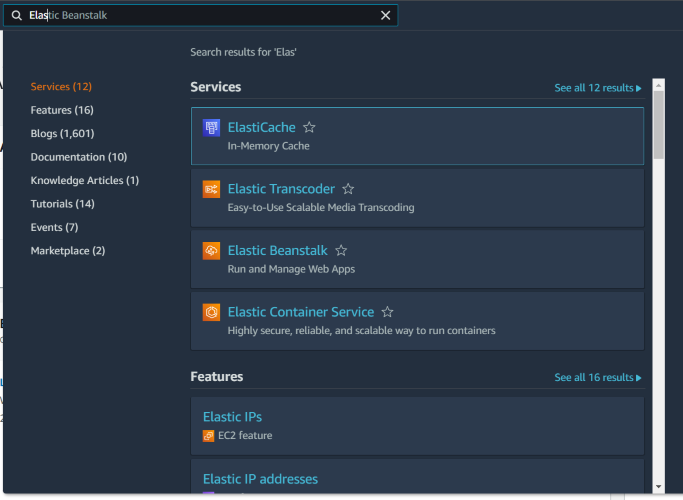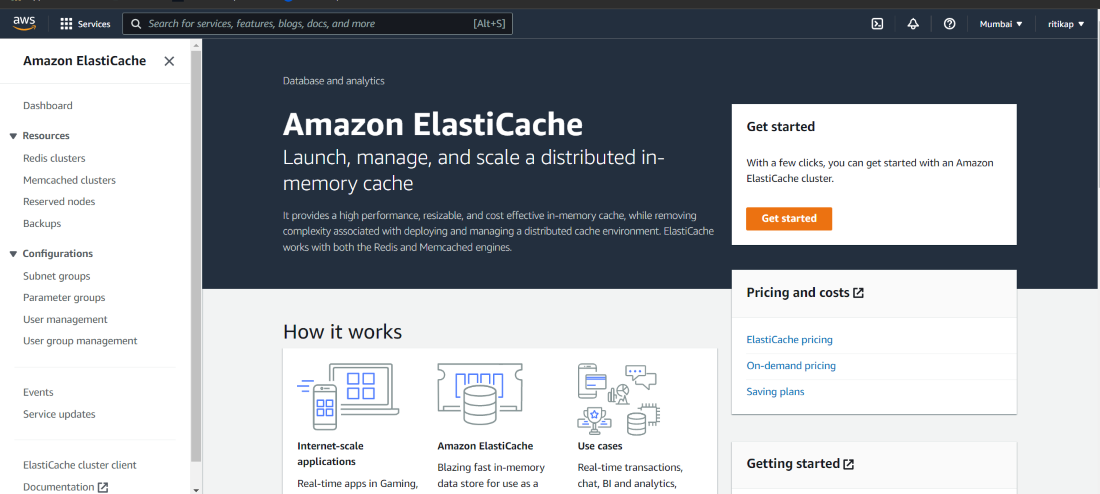This
article intends to make the readers aware of one of the core services of AWS or AWS called
the Amazon Elastic Cache. Amazon ElastiCache is a complete caching
solution proposed by AWS. It elevates the overall data accessing the experience
of a user because of its wide range of multiple real-time use cases support.
ElastiCache from Amazon is a fully managed and in-memory caching system which
supports for flexible and real-time use cases.
Before
diving deep into the functioning concepts, let us understand a few basic terms
attached to it.
What is
Caching?
Caching is
the process of storing data in a cache. It allows you to quickly reuse data
that has been previously obtained or calculated. Normally, all the data resides
in the main memory of the system, but caching reduces the whole retrieving
process with the help of cache memory. In simpler words, caching reduces the
searching bandwidth of the desired data. A cache is a high-speed data
storage layer in computing that saves a portion of data that is often temporary
in nature so that forthcoming requests for that data may be served up faster
than accessing the data’s primary storage location. There are some database
queries used by user are inherently slower and also costs expensive than others
queries to users. By caching the results of query, users can pay only for
the price of the query once used. Then the user can quickly retrieves the data
multiple times but there is no need to re-execute the query.
Amazon
Elastic Cache:
ElastiCache
from Amazon is a fully managed in-memory caching solution that supports a
variety of customizable, real-time use cases. Amazon Elastic Cache has the
ability to manage, deploy, and scale the distributed in-memory cache
environment in the AWS cloud. ElastiCache can be used for caching, which
improves application and database speed, or as the main data store for use
cases like session stores, gaming leaderboards, streaming, and analytics that
don’t require durability.
Amazon
ElastiCache allows its users to use the Redis and Memcached cache
engines.
Redis stands
for Remote Dictionary Server. Here, the dictionary refers to the dictionary
data structure. As we all know, dictionaries work on the key-value pair
mechanism and so does Redis. It is an open-source in-memory data structure
implementing the caching process. Amazon ElastiCache with Redis is completely
compatible with open-sourced data formats, APIs, and clients.
Memcached is
a memory management caching system as well. It is frequently used to speed up
dynamic database-driven websites by caching data and objects in order to
minimize the number of times an independent data source must be read in order
to obtain the values into the web application. Memcached is a simple yet
powerful memory caching system. Its easy design promotes speedy deployment,
simplicity of development, and overcomes numerous issues associated with huge
data caches. Its API is available in the majority of common languages.
Let us
look at Amazon ElastiCache on the AWS management console.
Login to
your AWS account. Once you are redirected to the AWS management console. Type
“ElastiCache” on the search bar and the first option that appears will lead to
our desired console. Refer to the screenshot in order to avoid any confusion.

In a while,
you will be directed towards the Amazon ElastiCache Console. On the
left of the window, there is the navigation pane, which consists of various
services as options. Refer to the image attached ahead for better
understanding.

This was a
quick sneak peek with Amazon ElastiCache. There are a variety of options for
the user to choose from depending upon the requirements.
Usecases
of Elastic Cache:-
- Accelerating in lightning-fast
application performance
- Ease to handle the backend
database load
- Supports real-time applications
- Stores the non-durable dataset
ElastiCache
Benefits:
- High performance: ElastiCache allows you to
cache frequently accessed data in-memory, reducing the latency and
improving the performance of your applications.
- Scalability: ElastiCache provides a highly
scalable cache environment, allowing you to scale up or down the size of
your cache cluster as needed to accommodate changes in traffic or
workload.
- Low latency: ElastiCache is designed to
deliver low latency for your cache operations, making it suitable for
applications that require real-time data access.
- Fully managed: ElastiCache is a fully
managed service, which means AWS takes care of the infrastructure,
patching, and backups, allowing you to focus on your core business.
- Integration with other AWS
services: ElastiCache
integrates with other AWS services such as EC2, RDS, and Lambda, making it
easy to build scalable and highly available applications.
ElastiCache has some limitations to
consider. For example, it is a cache service, not a persistent data store, so
it is not suitable for storing data that must survive a cache cluster restart.
Additionally, ElastiCache is a regional service, so you cannot use it to cache
data across regions.
Customers
using Elastic Cache:-
1. Tinder
2. PayPay
Corporation
3. Adobe
4. Airbnb
5. Coralogix
6.
McDonald’s
7. Dream11
8. LG Cloud
Center
9. Grab
10. Rokt


No comments:
Post a Comment